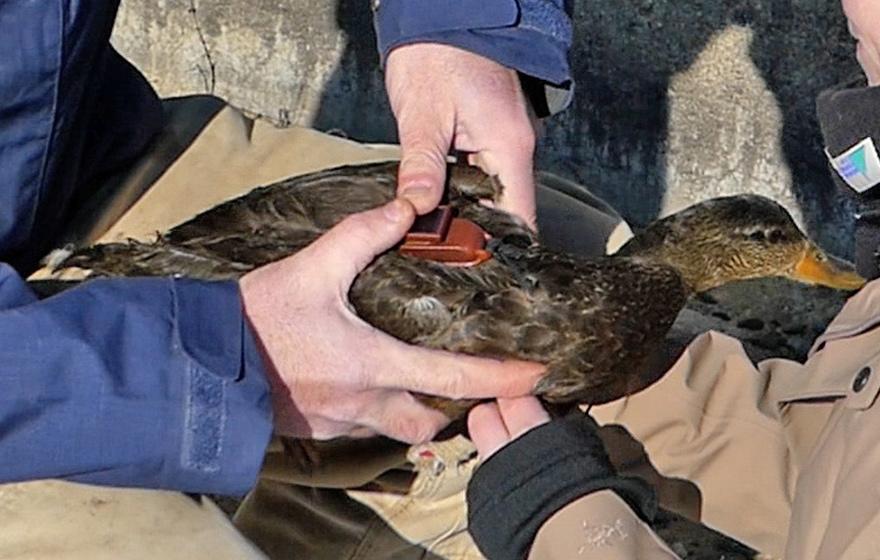- Division of Fisheries and Wildlife
Media Contact
Media Contact, MassWildlife

One migratory bird species has been getting extra special attention this winter: the American black duck. Once the most abundant dabbling duck in eastern North America, black duck populations declined between the 1950s and 1980s. Although they have stabilized since then, they remain below international objectives.
To coordinate research and help further restore historical populations, the Black Duck Joint Venture was born. Participating nonprofits, universities, states, and provinces on both sides of the U.S. - Canada border (including Massachusetts) have supported this international initiative as part of the broader North American Waterfowl Management Plan. Since the 1960s, MassWildlife has participated in banding and other research to track the migratory and reproductive progress of this valuable Atlantic Flyway wildlife resource.
“This winter, we outfitted nine black duck hens in southeastern Massachusetts with small waterproof, solar-powered, cell-tower-connected radio transmitters,” said H Heusmann, MassWildlife Waterfowl Project Leader. “Unlike those with traditional leg bands, these hens can now share geospatial data on whether, where, and when they are able to migrate, nest, and return. Information from these nine birds will be combined with data from hundreds of tagged black ducks across eastern North America over the next four years.”
Black ducks depend on and migrate between coastal salt marsh, freshwater wetland, and northern boreal forest habitats. Research suggests that a key factor of the long-term health of their populations will depend on maintaining and improving the quality and quantity of their habitats. These research efforts result in the information required for biologists to monitor and help manage black duck population health over time. One visiting researcher from the University of Saskatchewan, PhD candidate Ilsa Griebel, joined the effort as part of a broader journey from Maine to South Carolina. She also shared her enthusiasm for black ducks and these new methods of study, writing:
“By using state-of-the-art tracking devices that combine GPS and acceleration technology, we will learn not only where black ducks go and what habitats they use, but what they do at those locations. Are they feeding, resting or flying? We will also identify nesting attempts, and incubation and brood-rearing periods. This is really exciting, particularly in the northern boreal region where many black ducks breed. Logistical and financial constraints have made this region inaccessible to on-the-ground fieldwork that was required in the past to study breeding black duck ecology. Thanks to technology, my PhD research will at last explore the breeding period in depth and investigate how behavior, movement and habitat selection during wintering, migration and breeding limit reproductive success. This information will be used to guide habitat management to help increase black duck productivity and achieve population goals.”
This MassWildlife project was made possible in part by the purchases of hunting, fishing, and trapping licenses, as well as permits, stamps, and dedicated federal funds from the Wildlife and Sport Fish Restoration Program.
Learn more about American black duck restoration
View Massachusetts migratory game bird season dates, limits, and zones
